Carnival time and dancing Ball in Austria
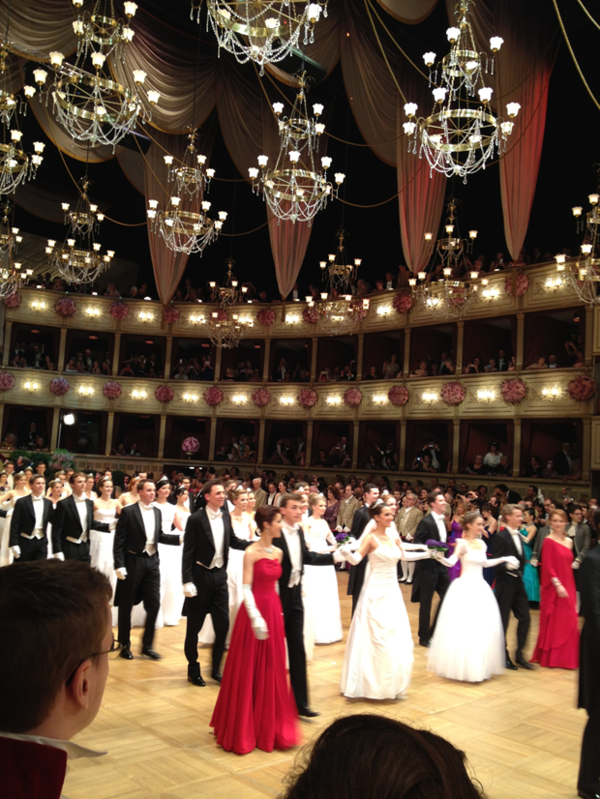
[아츠앤컬쳐] 카니발은 동방박사의 공현 축일(1월 6일)에서 재의 수요일 사이에 열리는데 꼭 이에 국한되는 것은 아니다. 오스트리아에는 많은 무도 이벤트가 있고, 특히 빈은 독보적인 ‘무도회’로 유명하다. 볼(Ball, 무도회)이라는 이름은 17세기에 라틴어 ‘Ballare’(춤)에서 유래되었다. 당시에는 주로 상류사회를 위해 열렸고, 후에는 평민을 위해 열었으며, 지금은 모든 사회 그룹마다 무도회를 열고 있다.
이 무도회는 빈 의회에서 국제화 되었다. 일설에는 1814년 11월~1815년 6월에 빈에서 유럽 의회의 장기적인 평화 계획 협상이 지연되자 오스트리아 외무장관 클레멘스 폰메테르니히가 무도회를 열어 대의원, 인플루언서들과 좋은 분위기를 조성하고 회의를 성공으로 이끌었다고 한다. 1935년 이래로 가장 유명한 무도회인 ‘오페라무도회’는 항상 빈 국립오페라하우스에서 열리며, 문화, 비즈니스, 정치, 학계 등 5,000명 이상이 참가하는 중요한 사교 행사다.
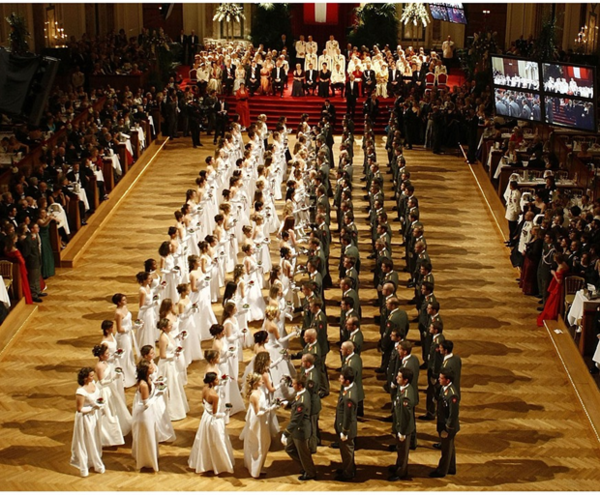
연주 음악은 대부분 왈츠로, 3/4박자 ‘랜들러’로 시작하며 작곡가 스트라우스 가문 이래 대 성공을 거두었다. 요한 스트라우스 1세와 2세 및 그의 친구 요세프 란너는 500곡 이상의 왈츠, 폴카, 카드리유 등의 댄스 음악과 여러 오페레타, 발레를 작곡했다. 요한 스트라우스 2세는 귀족뿐만 아니라 빈 포도원 주점에서 평민을 위해서도 음악을 연주하여 무도회는 사회의 각 지역에서 매우 인기를 얻었고 드물게 공공 댄스홀도 존재했다.
올해는 빈에서만 400개가 넘는 무도회가 열리는데 각기 고유의 특색을 지니고 사회 그룹마다 택시운전사에서 정치인에 이르기까지 자체 무도회 행사가 있고 대부분 전통 궁이나 호텔에서 개최한다. 표준 드레스코드는 턱시도 또는 남성용 드레스 수트와 여성용 롱드레스다. 일 년 내내 티셔츠를 입는 사람도 이때는 정장 차림을 한다.
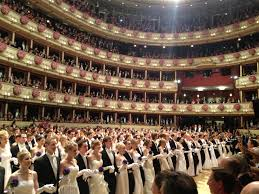
요즘 대규모 무도회에서는 젊은이와 노인 모두 즐거운 밤을 위해 왈츠에서 현대음악까지 다양한 음악이 연주된다. 이러한 이벤트 중 다수는 매치메이킹 또는 비즈니스에 사용된다. 일부 무도회는 빈 제과점의 맛있는 케이크와 쿠키가 제공되는 ‘추커배커발’과 같이 행운 추첨 또는 맛있는 선물로도 유명하다. 올해 행운 추첨에는 3,000개가 넘는 케이크가 걸렸다! 작년 ‘봉봉발’에는 약 4,000명의 방문객이 찾았고 약 3t의 과자가 소비되었다. 그 행사의 하이라이트는 ‘미스 봉봉’을 뽑는 것이다.
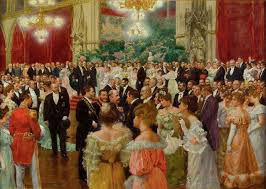
무도회는 보통 오후 9시에 시작하여 저녁 식사에 쉬고 다음날 오전 5시에 끝난다. 특히 자정 12시에는 쇼와 엔터테인먼트가 있는데 대부분 전통무용으로 ‘카드리유’(18세기말~19세기에 남녀 4쌍이 추던 춤)를 춘다. 먼저 전문 댄서가 공연한 다음 모든 사람이 춘다. 젊은 미혼 커플들이 무도회 데뷔를 통해 멋진 추억이 될 댄스 플로어를 열면 전설적인 밤이 시작된다.
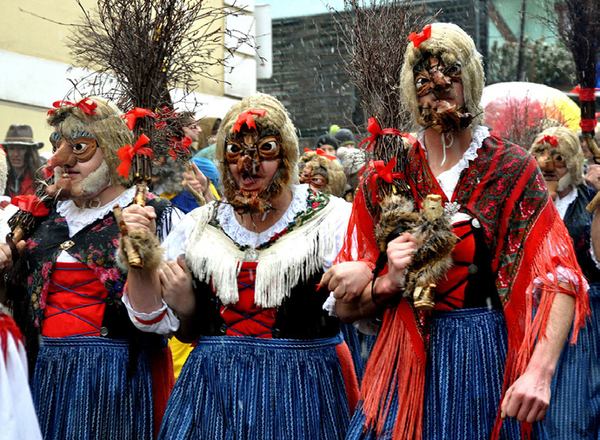
요즘 무도회는 빈뿐만 아니라 잘츠부르크, 그라츠, 린츠 및 기타 국제적으로 유명한 무도회 장소가 많다. 오스트리아의 서부 산악 지역은 카니발(파싱)을 벌이는데, 도시나 마을에는 재밌는 의상 행렬이 있고 남부에서는 주로 코미디언 행사가 있다. 빛과 어둠의 투쟁, 겨울에서 봄으로의 이행은 오래 전 파싱이라 알려진 카니발의 뿌리가 되며, 고대 전통에 이어 수많은 전통이 생겨난다. 매년 티롤, 오버외스터라이히(오스트리아 북부) 또는 슈타이어마르크(중,남동부)를 여행하면 마녀, 악마 분장을 한 연희자들이 수천 명의 관광객과 주민들을 즐겁게 한다.
이 지역에서는 기이한 관습이 있다. 예를 들어 바이센바흐의 ‘주데러’를 보면, 요즘은 ‘좀비’가 걸어다니고 있지만 이것은 단지 상징이다. 카니발 시즌 동안 정기적으로 관이 땅속에서 꺼내지고 짚인형을 사용하여 소란스럽게 ‘주데러무도회’를 축하한다. 1890년 이래 티롤에서 개최된 화려한 의상과 모자를 착용한 연희자들의 퍼레이드 ‘슐라이헤를라우펜’은 유네스코 세계문화유산으로 지정되었다.
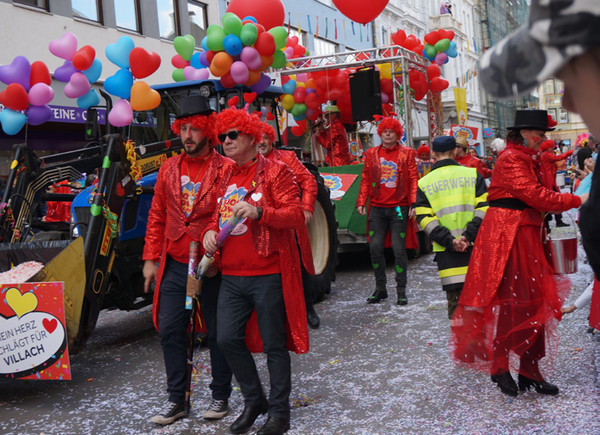
‘펠트키르헨 파슈나흐트춤추크’(스위스에 인접한 오스트리아 서쪽 국경 펠트키르히의 카니발 행렬)에는 거리에 카니발 의상을 입고 화려한 노래를 부르는 연희자들이 있다. 이것은 새해 인사의 축제이며 동시에 겁을 주어 쫓는 행위를 한다. 이 때 온 산에 불을 밝혀 행한다.연중 이 시기는 주로 다채롭고 재미있고 때로는 약간 광적이기까지 하다. 이 공식 행사 외에도 많은 민간 ‘펀치’(알콜 또는 무알콜 혼합음료) 파티가 전국에서 행해진다.

Carnival time and dancing Ball in Austria
In the time between the “3 Kings” or Epiphany day the 6th of January and the Ash Wednesday, but not limited too. Many dancing events are hold in Austria. Especially Vienna is well known for its exclusive “Ball” events. The Name ball originated from the Latin word “Ballare” (dancing) and was created in the 17th century. At that time mainly for noble society and later for the commons and now each of the society group has is own “Ball” event.
The internationalization of this events started with the Ball of “Wiener Kongress” (The Congress of Vienna). The rumour says, that the negotiations held in Vienna from November 1814 to June 1815 about the objective of the Congress to provide a long-term peace plan for Europe was stalling, therefore Austrian statesman Klemens von Metternich initiated an “Ball” event for all the delegates and influencers to create a nice atmosphere and a possibility to talk and discuss in an informal way, which made the congress a success. Since 1935 this most prestigious Ball event the “Opernball” always held in the Vienna State Opera House which is converted or this event only from the Opera hall into a large dancing hall with international celebrities from the world of culture, business, politics, academia and sports which make the ball a high-key social event with more than 5.000 guests.
The music played is mostly the Walz, a music written in 3/4 time originated in the country side as “Ländler” and developed mainly under the Strauss dynasty, a famous Austrian composer family. Under the Strauss dynasty Walz was introduced to all over the world with great success. Starting with Johann Strauss Senior later with his son Johann Strauss Junior and his friend Josef Lanner, He composed over 500 waltzes, polkas, quadrilles, and other types of dance music, as well as several operettas and a ballet. Under the son time, Balls became very popular for each part of the society, because Johann Strauss Jun. was playing his music not only for noble but also for commons in “Heurigen” places (A Vienna simple Wine Restaurant, mostly in the vineyard) and public dance halls, a rare situation at that time.
In this year more than 400 Ball events are hold in Vienna alone (please find on the end a short list of the events) Every “Ball” has its own flair, each society group is organizing their own Ball event, from the Taxi drivers to the Politicians, most of the “Ball” are held in traditional palaces or hotels. The standard dress code is tuxedo or a dress suit for the men and long dress for the ladies. Even someone which is wearing the whole year over tee-shirts at these events - its dress up time. Now a days at large “Ball” events many kinds of music is played in different Rooms not only Walz, but modern music as well, an enjoyable evening for young and old.
Many of these events are used for matchmaking or of a finalization of a business. Some Balls become famous for the lucky draw or delicious gifts like of the Ball of Viennese Bakeries the “Zuckerbäckerball” where delicious cakes and cookie is served. This year lucky draw will hold more than 3000 cakes! Or the “Bonbonball” where last year around three tons of sweets have been eaten and giving away by the approximately 4,000 visitors right on the spot.
The highlight of this evening is the election of the “Miss Bonbon” Balls are usually starting at 9pm, to have time for relaxing dinner before and end sometimes its end at 5 am the next day. During the night there are shows and entertainment especially at 12 O’clock midnight where mostly an old traditional dance the “Quadrill” 1) will be performed first by professionals, then by everyone, who like to try. On the beginning of each ball debutants (young unmarried couples) will open the dance floor, before a legendary night starts - A wonderful remember for each young participant.
Nowadays, Ball is not only famous in Vienna, there are a lot of Ball events in Salzburg, Graz, Linz and many other international famous locations. The western part of Austria, the mountain region, has a different way to celebrate, it’s called Carnival (Fasching), with processions during the city or village with funny costumes and / or comedian events mainly in the southern part of the country. The struggle between light and darkness and the transition from winter to spring comprise the roots of the carnival period in Austria, known as “Fasching”, which go back a long time. Countless traditions and ancient traditions come to life – much to the delight of the inhabitants and many thousands of tourists who travel to Tyrol, Upper Austria or Styria each year to experience the motley goings-on of the witches, demons and the devil.
In this region some bizarre customs are cultivated. For example, think of the “Zuderer” from Weißenbach. On these days the “desecrators of corpses” are walking around – but luckily this only happens symbolically. During the carnival season, a coffin is regularly taken out of the earth, and a roaring “Zuderer ball” is celebrated using a straw doll. The “Schleicherlaufen”, a parade of people wearing extravagant costumes and hats which has taken place in Tyrol since 1890, has been given UNESCO World Cultural Heritage status.
The “Feldkircher Fastnachtsumzug” (carnival procession in Feldkirch, the most far westen part of Austria, closed to Swizerland) features people in colorful costumes coming out on the street and welcoming the spring with loud singing. It goes without saying that this is not only a festival of greeting but of scaring away. In this case it is done using torches which are lit on the entire mountain.
This period of year is mainly colorful, funny and sometimes a bit crazy, besides this official event many private “Punsch” Parties (Alcoholic or nonalcoholic Mixed Drink) are taking place all over the country.
글 | 볼프강 슬라빈스키 Wolfgang Slawinski
한·오스트리아협회 부회장, 서울명예시민

